Plumeria, also known as frangipani, is a fragrant and beautiful tropical flower that can be grown indoors and outdoors. How much water does plumeria need, you may ask? We've researched this to find the answer for you and have it below!
There is no definite measurement on how to water Plumerias. However, it is advised to water your plumeria lightly on well-draining soil at least every two weeks and twice a week during the summer while letting the soil dry in between watering.
This flower is an excellent addition to your home or garden because it needs little maintenance. Keep reading to learn more about caring for plumerias and keeping them healthy.
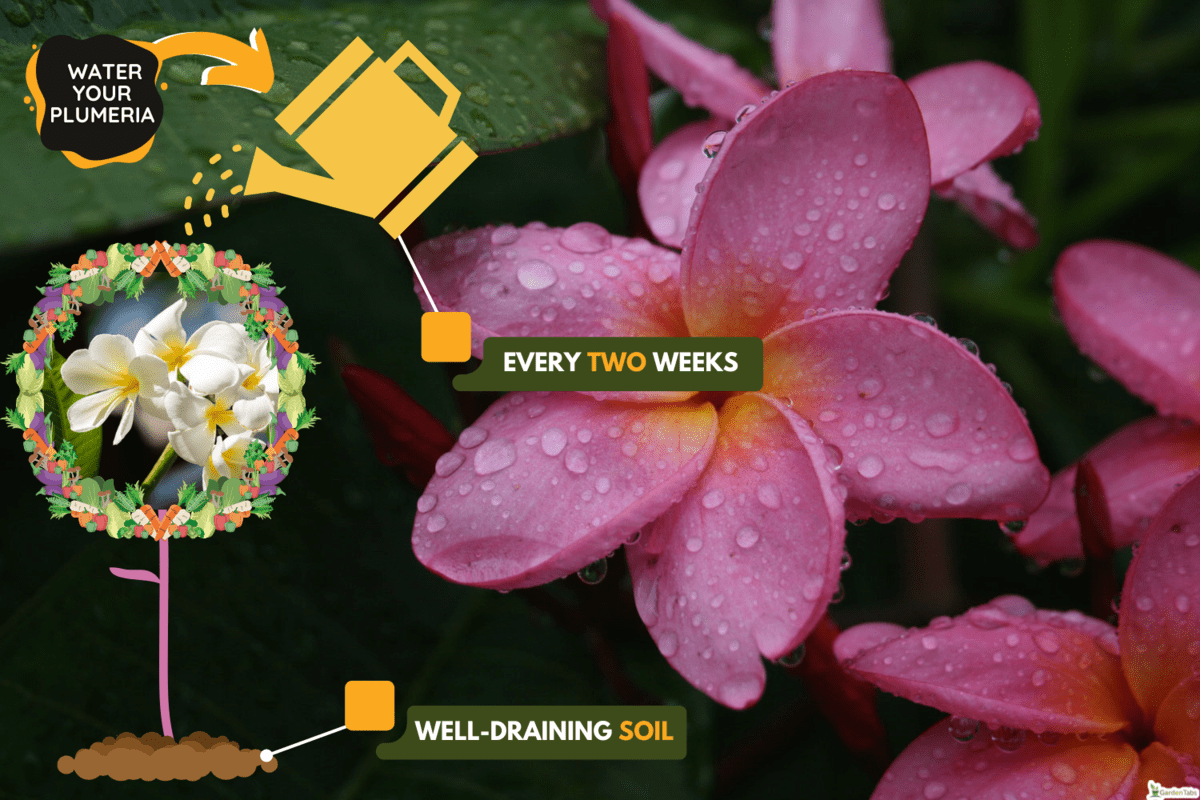
How Much Water Does Plumeria Need?
Plumeria is a tropical flower that thrives in tropical places. They grow best when they receive full sun in well-drained soil. There is no definite measurement of how much water you should give your plumeria.
However, as a golden rule for watering plants, at least one inch of water will suffice every week or in between by allowing the soil to dry. It is essential to water gradually for the ground to absorb the water.

This allows the water to penetrate up to the roots thoroughly.
Water when the soil is dry to the touch by sticking your finger to the soil. Let your finger sink in completely; sometimes, the surface may be dry, but there is ample water in the ground.
This might be different when plumerias are in the ground or pots.
In The Ground
Plumeria cultivated on the ground can be watered weekly. They thrive best in well-draining soil and are drought-tolerant, which is why they need occasional watering.
It is advised to water the plant at least twice a week in the summer and let the soil dry in between to prevent overwatering plumeria.
In Pots
Plumeria thrives in pots and can be moved around with ease.
Use a pot with at least a 6-inch diameter and good drainage holes when planting plumeria. When watering plumeria in pots, choosing a pot with sufficient holes for the drainage system is essential.
Poor drainage may affect the plant and cause its roots to rot. It is recommended to be watered every 1 to 2 weeks. Light misting may suffice if your plant begins to look somewhat dehydrated indoors.
During Summer
You might consider frequently watering your plumeria in the summer out of concern that it won't survive. Overwatering, however, can cause the roots of your plants to rot.
Keeping it moist is enough while letting it dry in between watering.
Watering at least twice a week during the summer may suffice. Misting is also ideal during the summer, but it should only be done in the foliage, not the flowers.
During Winter
Plumeria goes dormant during the winter. It is best to avoid watering your plumeria when the temperature drops, as this may kill your plant.
A sign that your plumeria is dormant is when they don't have leaves. During its dormancy, it usually does not require watering as this will cause its root to rot.
Fertilizing is also unnecessary; it is best to leave them alone until they bloom in the spring.
Where Do Plumeria Grows Best?
Plumerias will start blooming once they reach 2 to 3 years old. They also enjoy being exposed to at least 6 to 8 hours of full sun and can also tolerate partial shade.
The best soil to grow plumeria is well-draining soil that is slightly acidic with a pH level of 6.0 to 6.7 when growing in pots. They should also be planted facing the south, where they can get ample sunlight.
The ideal temperature during the day time for this plant would be 65°F to 80°F (18°C and 26°C) and 50°F (10°C) for the night time.
If the temperature drops below this, it's best to bring your plant indoors, as plumeria thrives best in tropical climates and does not enjoy low temperatures.
When placing plumeria indoors and your home does not have enough light sources, placing the plant under fluorescent light for at least 14 to 15 hours daily will suffice.
Although plumeria thrives in full sun, it is susceptible to sunburn, which causes its stem to turn yellow and wrinkled. Giving your plant some partial shade may be helpful to avoid this.
How Do You Know When Plumeria Needs Water?
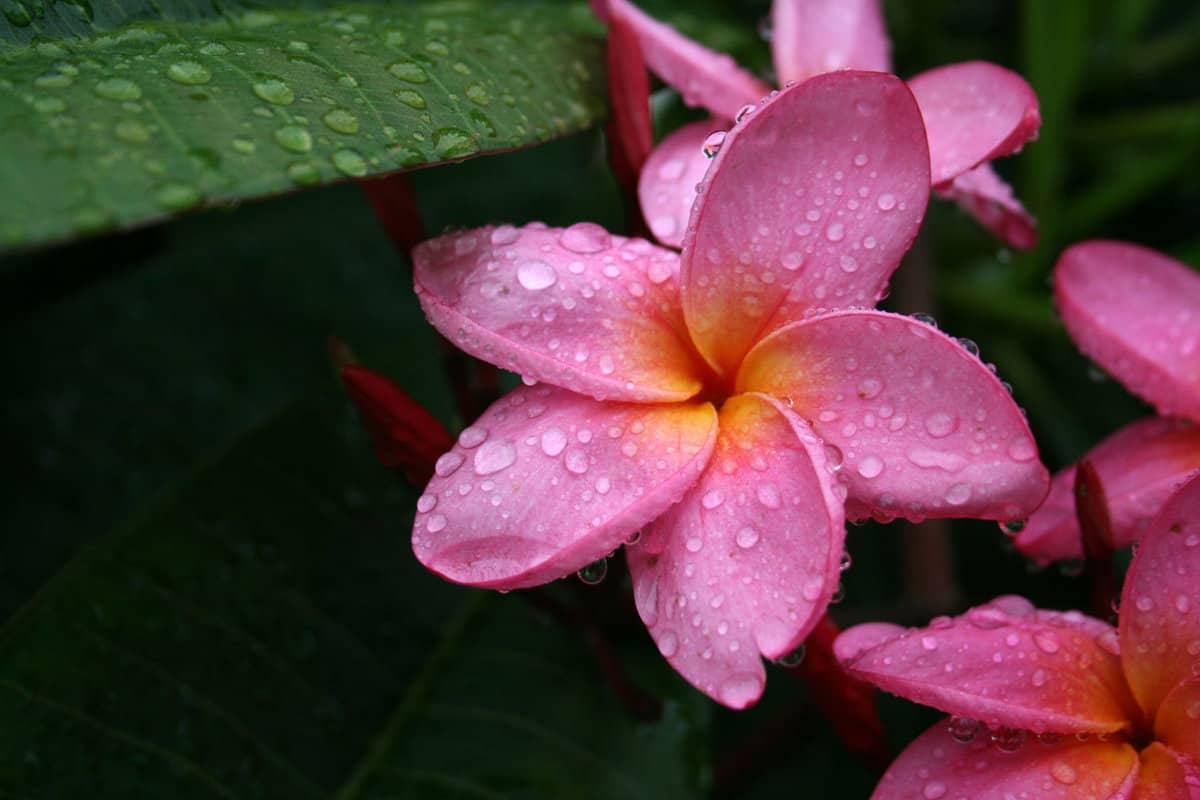
If overwatering is a thing, so is underwatering. Although plumeria is drought tolerant and requires minimal care does not mean they should get neglected.
Here are some of the signs you can look out for to know whether your plant is thirsty:
Wilting
Insufficient water causes wilting. Plants begin to wilt when their stems start to droop, and they begin to lose leaves.
Dry Soil And Leaves
Dry soil is easily identified because it appears dehydrated. Long periods of drought may cause the earth to repel rather than absorb water, while dry leaves will start looking brown.
How Do You Know When Plumeria Has Too Much Water?
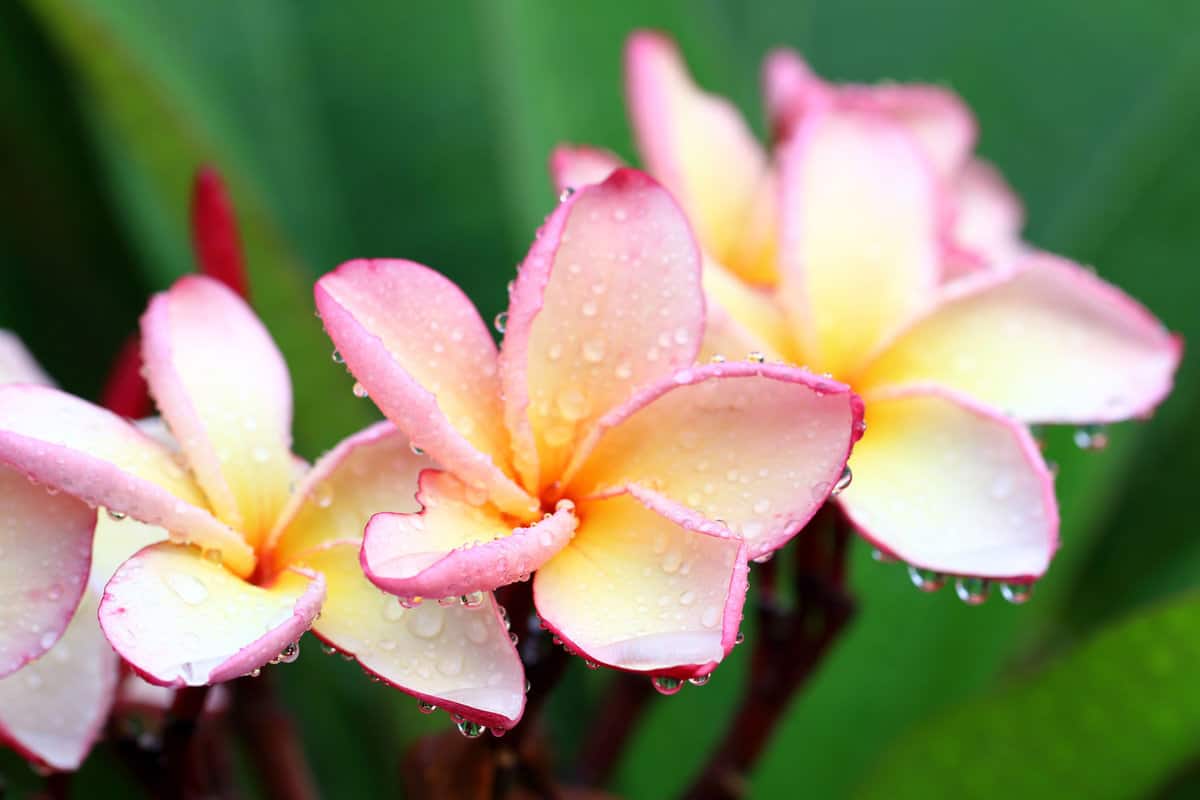
Overwatered plumeria may cause its root to decay and the plant to wilt. Leaves will start turning yellow and eventually will start falling.
Plumeria likes water but will not tolerate excessive amounts, so be careful not to overwater your plants.
Overwatering is just as bad as underwatering. To save your plant, repot or re-plant it in a different container immediately, and only water the soil when necessary.
How Long Does It Take For A Plumeria To Bloom?
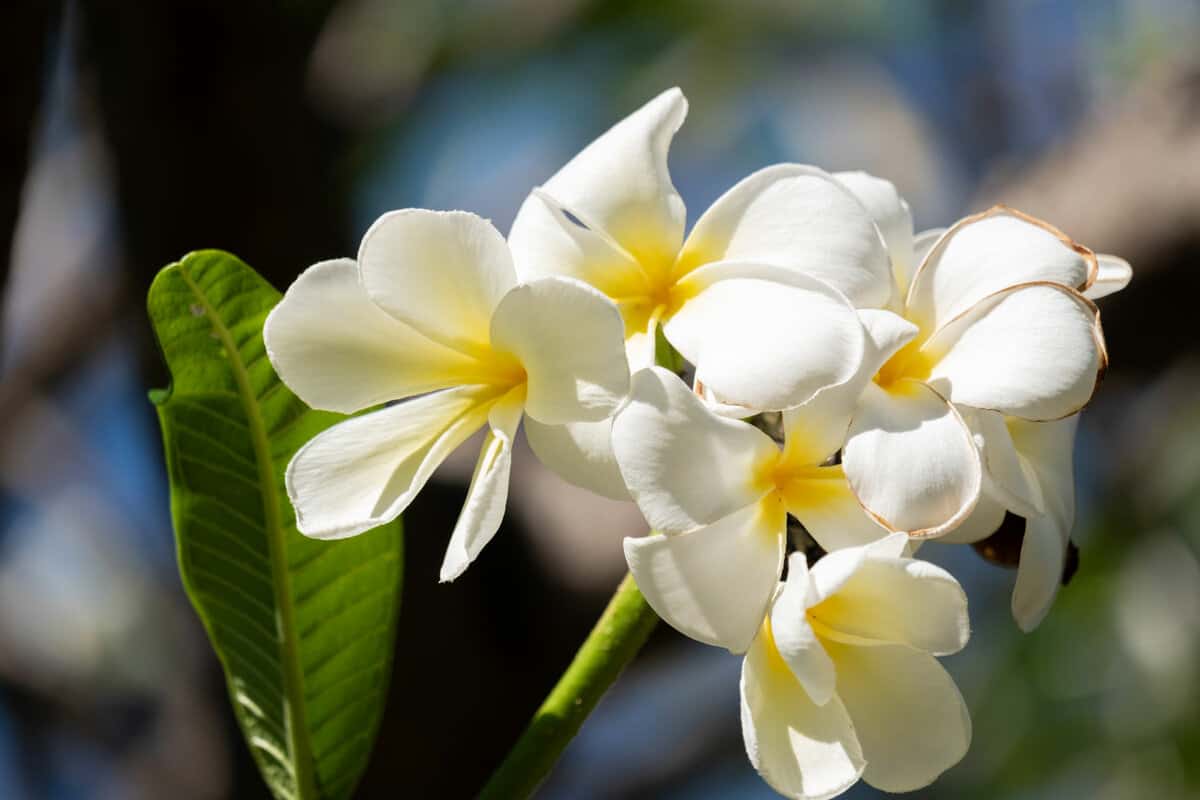
Plumerias will start blooming once they reach 2 to 3 years old. Plumeria cultivated from cutting can bloom in 1-3 years, while grown from seed can bloom in 3 years after they are planted.
To encourage your plumeria to bloom more, they should be fed biweekly with high-phosphorus fertilizer and low-nitrogen or follow the fertilizer's packaging instructions.
See this flower food on Amazon.
Adding nitrogen, however, will only encourage the leaf growth and not the flowers. They are also heavy eaters, so best fed them in their peak blooming season.
How Big Do Plumeria Trees Get?
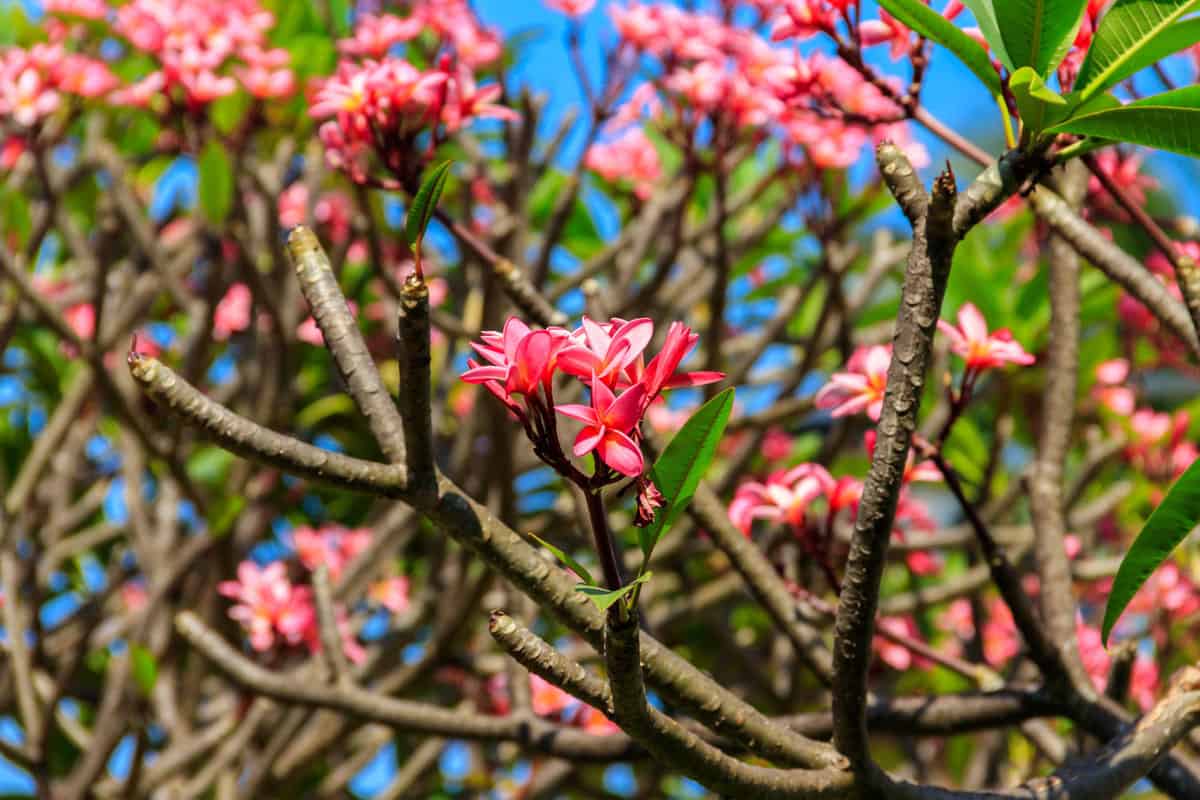
Plumeria can reach 20 feet and about 3 feet when cultivated in pots. However, this may vary as plumeria can adapt to the size of its container.
Repotting may be necessary for the sake of its root system. It is recommended that every 1 foot added to the size of your plumeria equals 1 gallon.
Expanding your plant's container will help it establish a good spacing for its root.
Is Plumeria Poisonous?
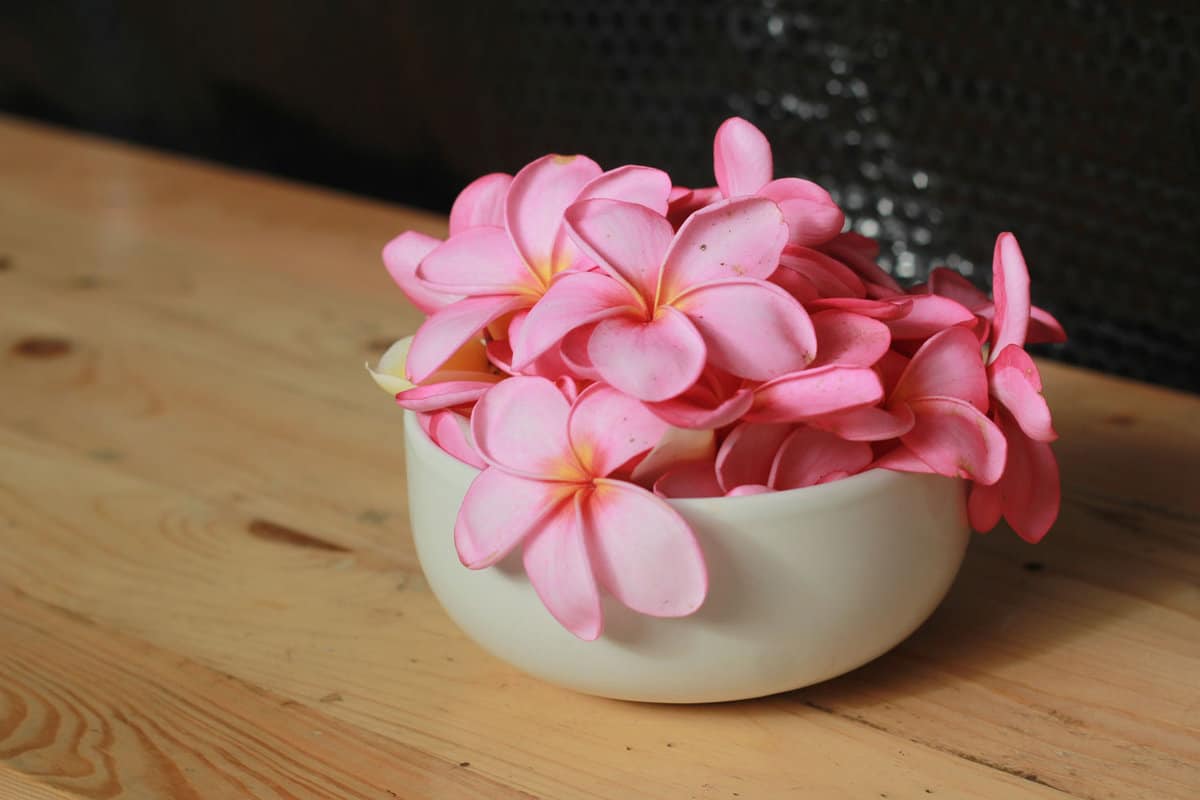
Yes, almost most parts of plumeria are considered toxic. The sap may cause skin irritation for people with sensitive skin, so it is best to treat the plant with care when tending it.
This plant is also toxic to our pets.
To Finish It Up
Plumerias are tropical plants that are not only beautiful but come in different colors that can be cultivated both indoors and outdoors.
It also produces fragrant blooms and comes in different varieties. They require minimal care and are a perfect addition to your patio to add that tropical feel.
This plant requires minimal watering and maintenance too. We hope this post made watering your plumeria a bit easier; good luck!
If you enjoyed reading, check out more of these related articles below:
What Is The Best Soil For Plumeria?
Tropical Plants Suitable For Pots In Full Sun [11 Ideas To Make Your Landscaping Pop]

